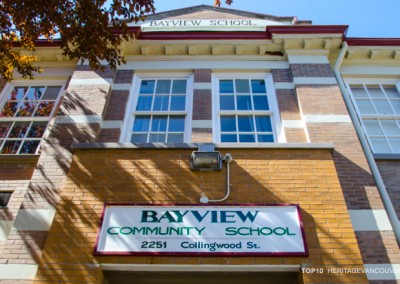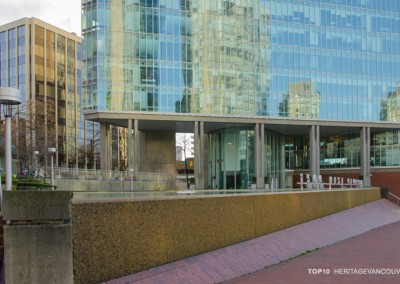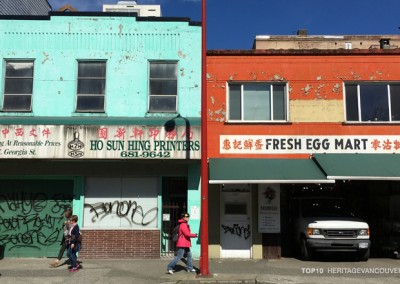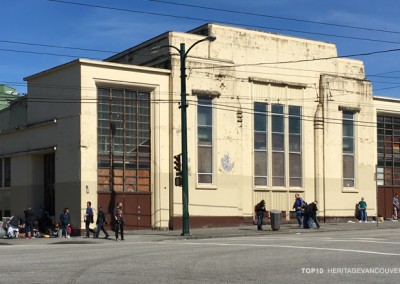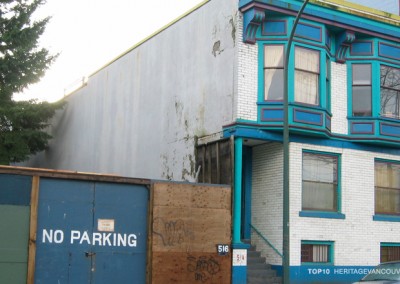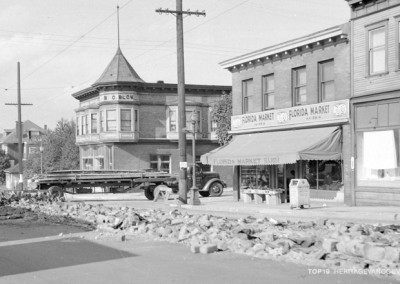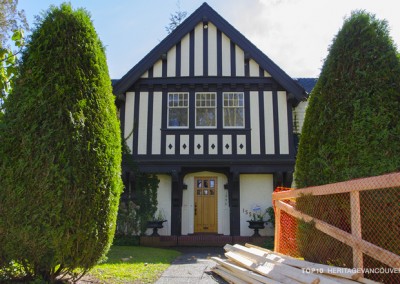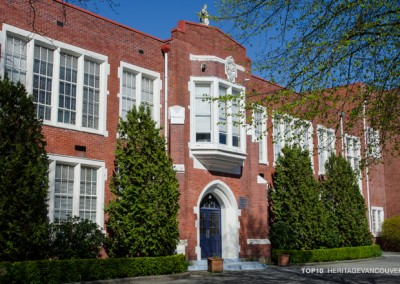This is the third year in a row that historic churches have been featured on our Top10 Watch List. As many Vancouver churches face declining attendance, the rate of church closures is threatening the future of community heritage and gathering spaces. St. Stephen’s United Church, designed in a West Coast Modern style, opened in 1964.
In a story that is now all too common, the 150-seat sanctuary used to be full on Sundays; the congregation has now declined to less than 90 people, and only about 30 members attend the weekly service. In a few years, the church may have to close, and the building will likely be sold and replaced by mid-rise housing following the development pattern nearby on south Granville Street.
When heritage churches close, Vancouver communities lose more than places of worship, they also lose space for the countless social and cultural activities that churches host each week. With fewer places for groups to meet in our ever-denser city, more people will become isolated, diminishing our quality of life. Public places are essential to a healthy community and are a cornerstone of democracy, and our churches represent a very significant amount of the social gathering space available in our city.
Threat
What is the threat to St. Stephen’s United Church?
This is the third year in a row that historic churches have been featured on our Top10 Watch List. As many Vancouver churches face declining attendance, the rate of the closures is threatening the future of community heritage and gathering spaces.
The pace of church closures appears to be picking up, as some congregations continue to decline, and churches either close, consolidate, and share or move to smaller facilities. A number of neighbourhood churches have already closed, and their sites are now under redevelopment.
St. Stephen’s United Church, designed in a West Coast Modern style, opened in 1964. In a story that is now all too common, the 150-seat sanctuary used to be full on Sundays; the congregation has now declined to less than 90 people, and only about 30 members attend the weekly service. In a few years, the church may have to close, and the building will likely be sold and replaced by mid-rise housing following the development pattern nearby on south Granville Street.
Significance
Why is St. Stephen’s United Church significant?
St. Stephens Church was founded in 1958 for the growing postwar residential community between Granville Street and Oak Street and W 49th and W 57th Avenue. After meeting in temporary locations for a few years, in 1964 the congregation moved into a new building on a prominent site on south Granville Street.
Rather than follow the more conservative architectural styles of earlier churches, the architect, Arthur J. Mudry, designed the building in a contemporary West Coast style. He was one of the many talented Vancouver area postwar architects whose modernist residential and institutional designs responded to the unique regional landscape and climate. Mudry also created the award-winning design for the striking Baptist Church (1967) located at 450 Mathers Avenue in West Vancouver.
St. Stephen’s modern style creates an informal and welcoming place for worship. The tall, triangular sanctuary has cedar shingle roofs that descend to within a few feet of the landscaped grounds. Visible from Granville Street, tall coniferous trees frame the green-stained cedar wall. A walkway from Granville leads to a paved courtyard, and framing the main entry are the steep sanctuary roof on one side and the low flat-roofed church hall and office wing on the other.
On the inside, there is a dramatic spatial transition from the low entry into the tall volume of the sanctuary. The interior is defined through the steeply sloped wood ceiling, the laminated wood structural arches and more recent wood pews. Natural light enters from large windows at the west end, an east window high above the altar, and low windows along the sides where the roof meets the walls.
Position
Heritage Vancouver’s position
When heritage churches close, Vancouver communities lose more than places of worship, they also lose space for the countless social and cultural activities that churches host each week.
With fewer places for groups to meet in our ever-denser city, more people will become isolated, diminishing our quality of life. Public places are essential to a healthy community and are a cornerstone of democracy, and our churches represent a very significant amount of the social gathering space available in our city.
Heritage Vancouver strongly supports retaining our heritage churches.
Our first preference is working to maintain them as social and cultural community space. Where this is not feasible, we would like to see churches repurposed for creative new uses, and to avoid loss through demolition.
Recent examples of creative responses to ensuring a future for different churches include:
- Over the last 20 years, the former St. James United Church in Kitsilano has evolved into St. James Community Square, offering a wide range of social, cultural and recreational programs. The Church recently sold the site to the City, which will maintain the facility and continue to run the community programs.
- Ryerson United Church on West 45th Avenue is undertaking a renewal project “Redeveloping Ryerson” to improve the facilities for worship, and to meet gaps in community and arts needs. The intent of the project is that the sanctuary will be restored, the memorial centre rebuilt, and rehearsal and choral performance spaces will be expanded. Space will be improved for community meetings and associations (e.g. youth groups) and the church will strengthen the outreach to local seniors – to combat isolation and loneliness. To do this, Ryerson intends to develop a portion of its land and applying the revenue to fund proposed improvements.
- A proposal by First Baptist Church, 969 Burrard Street, to develop their site in partnership with Westbank. The project would see the expansion of church facilities, including the seismic upgrading and rehabilitation of the heritage church, through the development of a new residential tower.
Actions
What you can do
We strongly encourage the citizens of Vancouver to:
- Write a letter to Mayor and Council to express that significant heritage churches should be added to the Vancouver Heritage Register as part of the Heritage Action Plan.
- Contact the City of Vancouver to express that heritage churches should be retained for social and community use by non-profits, and cultural services.
- Communicate with the City’s Cultural Services Department that the retention of churches is an important priority, and that a plan should be developed to acquire and repurpose key assets for public/community use.
- Contact the churches in your neighbourhood and encourage them to work with the City to recognize the importance of their heritage buildings and to add them to the Heritage Register.
- Write a letter to churches in your area to encourage the formation of a Churches Conservation Trust, similar to the one created by the Church of England in 1969. To date, over 340 churches have been saved through regeneration projects that repurpose the buildings as community spaces.
- Find inspiration from successful national and local examples of repurposing heritage churches.
Resources
The Churches Conservation Trust is the national charity saving churches at risk in the United Kingdom:
www.visitchurches.org.uk
In the Ottawa region, examples of repurposing church properties are described in the Globe & Mail, November 11, 2013: “New Spirit for Redundant Religious Properties.”
Globle & Mail: New Spirit for Redundant Religious Properties
The value of spiritual space to Calgary’s downtown is assessed in the Calgary City Soul Phase 2 Final Report:
www.cardus.ca/store/2931/
Quebec’s Religious Heritage Council continues to track the creative reuse of the province’s surplus heritage churches:
www.patrimonie-religieux.gc.ca


